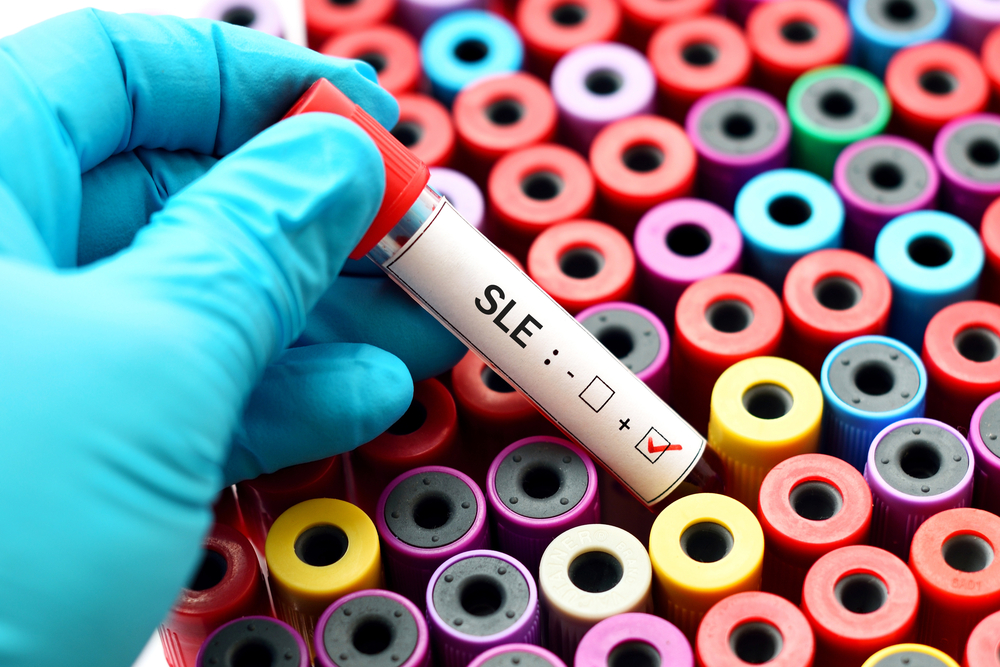Targeting Key Protein in Inflammation Could Prevent Lupus Kidney Damage, Study Suggests

Suppressing the key inflammatory protein iRhom2 reduced inflammation and prevented kidney scarring in mice susceptible to developing lupus, a study suggests.
This approach could be the basis of new treatments for kidney damage in patients with lupus and other autoimmune diseases, researchers believe.
The study, “iRhom2 promotes lupus nephritis through TNF-α and EGFR signaling,” appeared in The Journal of Clinical Investigation.
Lupus nephritis is a type of kidney disease in patients with systemic lupus erythematosus (SLE). It worsens over time and can lead to kidney failure. This serious lupus manifestation is characterized by gradual accumulation of molecules called immune complexes, which trigger inflammation and can lead to irreversible fibrosis, or tissue scarring.
Increasing evidence indicates that the protein ADAM17 plays a key role in inflammatory disorders, as well as cancer and heart disease. ADAM17 cuts the precursor of the pro-inflammatory molecule TNF-alpha to generate its mature, active form. ADAM17 also targets HB-EGF, a protein that contributes to skin and intestinal integrity.
In lupus and other autoimmune conditions, HB-EGF is associated with kidney fibrosis, while high levels of TNF-alpha activate immune cells that attack the body’s own organs.
The scientists’ earlier work showed that the iRhom2 and iRhom1 genes regulate the production of the ADAM17 protein.
“They separate out the protective and pro-inflammatory functions of the gene. iRhom2 is meant to immediately respond to bacterial invaders by activating ADAM17,” Carl Blobel of the Hospital for Special Surgery (HSS) and Weill Cornell Medicine (WCM) said in a press release. He is one of the study’s co-senior authors.
“If you have a breach of the barrier, you want to do two things: You want to rebuild the barrier and you want to activate the immune system,” he added.
The scientists evaluated whether manipulation of iRhom2 would inhibit ADAM17 protein. “In patients with lupus nephritis, you see an increase in expression of iRhom2,” Salmon said. “But if you have more iRhom2 [gene expression], you have more Adam17 [expression].”
Using mice carrying a mutation that increases susceptibility to lupus and kidney injury, the researchers found that blocking the iRhom2 gene prevented severe kidney damage, with greatly reduced inflammation and fibrosis.
They also discovered that suppressing the activity of either TNF-alpha or HB-EGF alleviated kidney injury, suggesting that these molecules are important in the disease process of lupus.
Importantly, kidney biopsies showed a link between high levels of HB-EGF and irreversible kidney damage. The same was seen in the kidney cells of lupus patients, which had abnormally high levels of iRhom2.
“These results provide the rationale for future studies of iRhom2 in human lupus patients,” the researchers wrote.
“A mechanism to block or inhibit iRhom2 would inhibit two key pathways for renal [kidney] injury in patients with lupus without significant side effects,” said Jane Salmon, MD, the other study’s co-senior author.
Xiaoping Qing, MD, PhD, the study’s first author, said the procedure was safe, too. “From a medical point of view, that’s what makes this approach so attractive,” Qing said. “Nobody can find anything wrong with mice that have no iRhom2, but they seem to be protected from autoimmune diseases.”
Such a strategy would represent a better approach than direct targeting of ADAM17. Because this protein in involved in several cell processes, blocking its activity could trigger severe consequences, Salmon observed.
The researchers now plan to test several methods of suppressing iRhom2.





